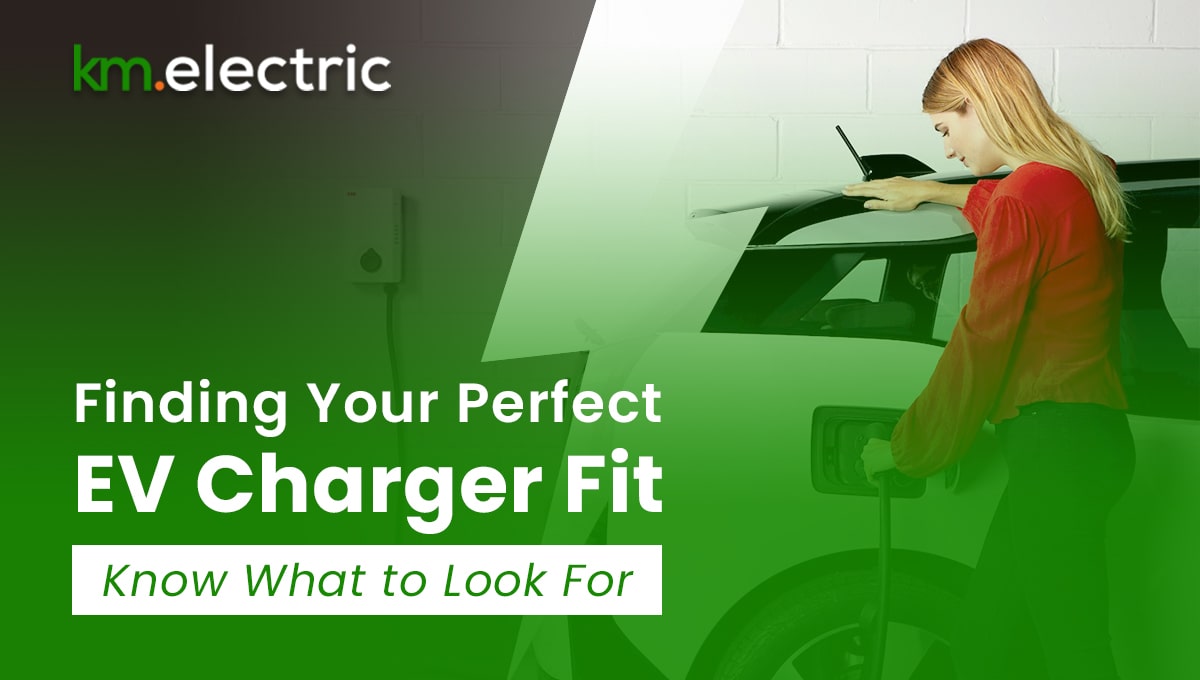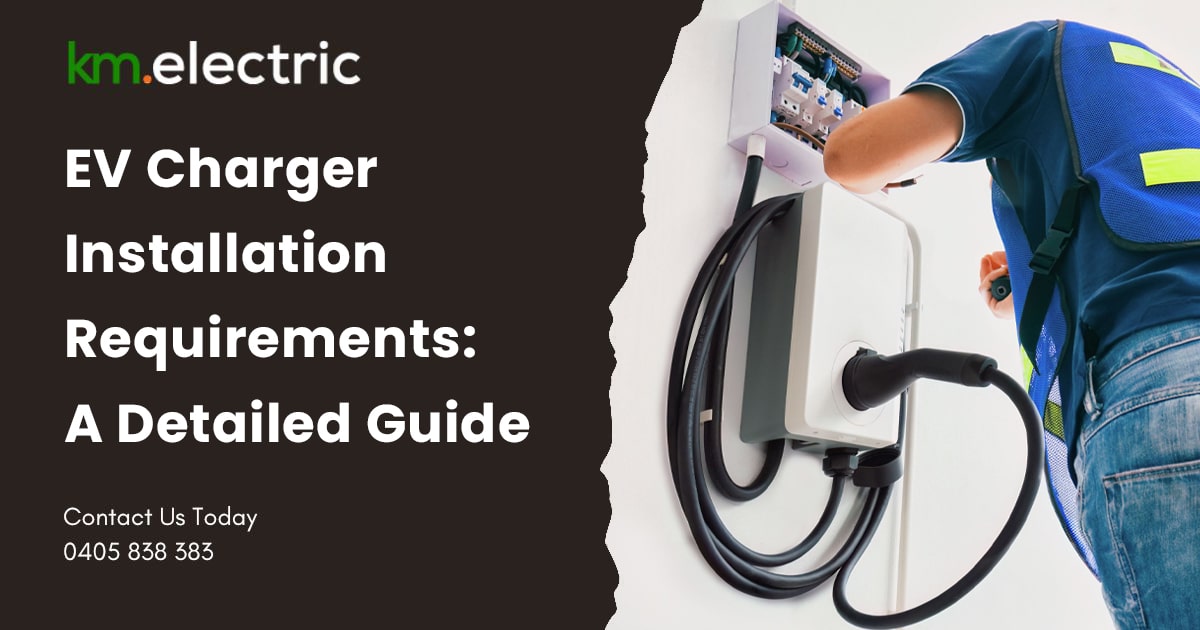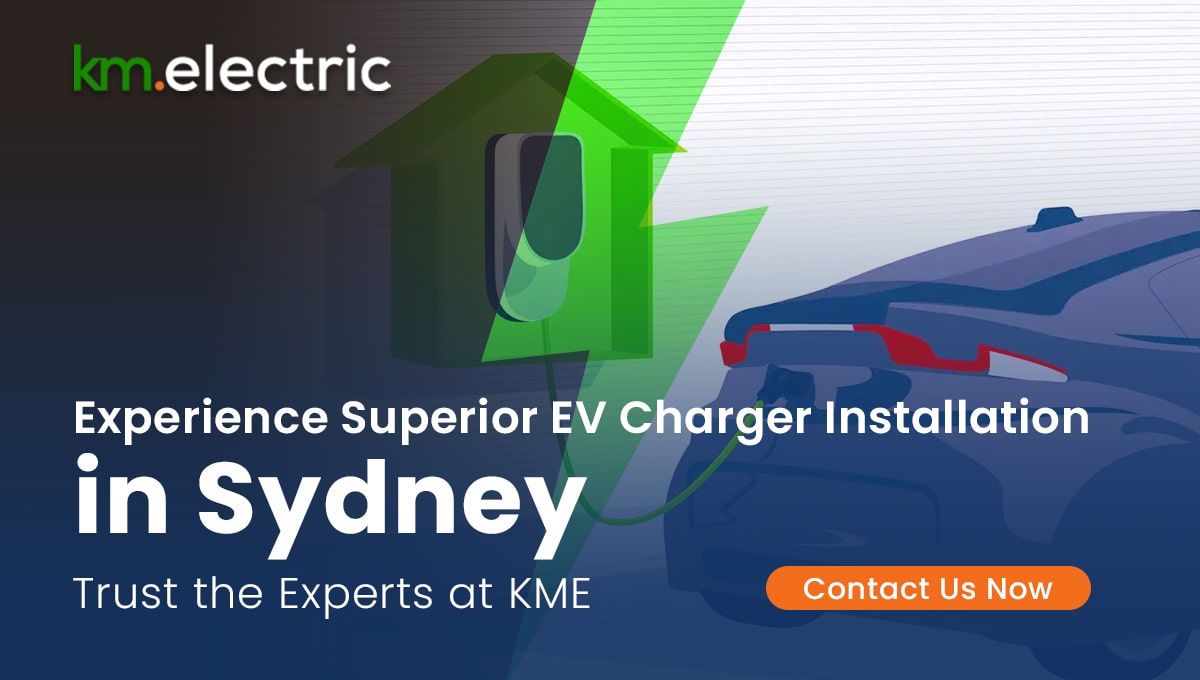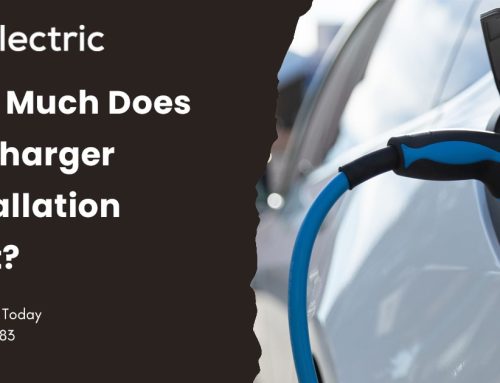While Australia lags behind most countries in terms of electric vehicle or EV adoption, the good news is that there surge in the uptake of electric vehicles continues across the country, driven by environmental concerns and advancements in EV technology. Government programs and initiatives to make EVs more attractive and accessible to Aussies also contribute significantly to the growing popularity of electric vehicles.
As more individuals and businesses transition to electric transportation, the need for reliable electric vehicle charger installation becomes paramount. Of course, understanding and adhering to EV charger installation requirements in Australia is essential to ensure convenient and safe charging experiences for users.
EV charging standards in Australia are designed to ensure safety, efficiency, and compatibility across charging networks. One interesting aspect is the harmonization with international standards, such as the IEC 61851 series, ensuring that EV chargers in Australia align with global best practices.
Additionally, the Clean Energy Council (CEC) accreditation program plays a pivotal role, certifying EV chargers that meet stringent quality and performance criteria. This commitment to standards not only fosters innovation and reliability but also instils confidence among EV users, paving the way for a seamless and sustainable charging infrastructure nationwide.
Regulations for EV Charger Installation in Australia and Compliance
The regulatory landscape for EV charger installations in Australia is governed by several key bodies and standards. These government bodies and organisations are involved in regulating EV charger installation and implementing standards and regulations. Here are some of the key entities and their contributions:
- Clean Energy Council (CEC): The CEC plays a significant role in accrediting EV chargers that meet stringent quality and performance standards. Their accreditation program ensures that EV chargers installed in Australia adhere to safety, reliability, and efficiency criteria. The CEC’s involvement boosts consumer confidence in EV charging infrastructure and promotes industry-wide best practices.
- Australian Standards (AS) Committees: Various AS committees, including AS/NZS 3000:2018 and AS/NZS 3008, are responsible for developing electrical and safety standards for EV charger installations. These standards cover aspects such as electrical wiring, circuit design, and safety protocols, ensuring that EV chargers meet industry benchmarks.
- Energy Networks Australia (ENA): ENA contributes to the development of technical standards and guidelines for EV charger installations within the energy network. Their involvement ensures that EV chargers integrate seamlessly with the grid, minimising disruptions and optimising energy efficiency.
- Electric Vehicle Council (EVC): The EVC advocates for policies and initiatives that support the growth of electric vehicles and EV charging infrastructure. They provide expertise and recommendations to government bodies on regulatory frameworks and incentives for EV charger installations.
- State and Territory Regulators: Each state and territory in Australia has regulatory bodies overseeing EV charger installations and compliance with local regulations. These regulators issue permits, conduct inspections, and enforce standards to ensure that EV charging infrastructure meets safety and environmental requirements.
- Local Councils and Planning Authorities: Local councils and planning authorities play a role in zoning regulations, land use planning, and permitting processes for EV charger installations. Their contributions ensure that EV chargers are strategically located, accessible, and compliant with local ordinances.
Overall, these government bodies and organisations collaborate to establish comprehensive standards, regulations, and accreditation programs that promote the safe, efficient, and sustainable deployment of EV charging infrastructure across Australia.
Compliance with these standards is not only a legal requirement but also crucial for ensuring the safety of users and the reliability of the charging infrastructure.
Since local regulations and permitting requirements vary across different states and jurisdictions, you need to thoroughly research and adhere to specific guidelines when planning and executing an EV charger installation project.
For example, in Victoria, EV charger installations may require a Certificate of Electrical Safety issued by a licensed electrician. In New South Wales, certain EV charging stations may qualify for government rebates or incentives, emphasising the importance of understanding regional regulations.
By following Australian standards, obtaining necessary permits, and staying informed about local regulations, property owners can navigate the EV charger installation process efficiently while prioritising safety and compliance.
Property Assessment – Choosing the Optimal Charging Location
Before proceeding with EV charger installation, a comprehensive property assessment is crucial. This assessment includes evaluating the property’s electrical capacity to determine if upgrades are necessary.
Factors such as the location of the charger for accessibility and safety compliance, as well as understanding permit requirements and zoning regulations specific to EV charger installations, must also be considered.
The selection of proper charging locations and safety considerations are crucial for ensuring accessibility, efficiency, and safety in EV charger installation projects. Here are the recommended guidelines for charging locations and safety considerations:
- Accessibility: Chargers should be strategically located for easy access by EV owners, considering factors such as parking convenience and proximity to main entrances. Accessibility for disabled individuals should be prioritised, with designated accessible parking spots near charging stations. Clear signage and markings should indicate the location of charging stations, making them easily identifiable for EV users.
- Placement: Chargers should be installed in well-lit and visible areas to enhance security and visibility, reducing the risk of accidents or vandalism. Avoid placing chargers in high-traffic or congested areas to prevent obstruction and ensure a smooth flow of vehicles. Adequate space around charging stations should be maintained to allow for ease of manoeuvring and the safe operation of EVs during charging.
- Safety Considerations: Chargers should comply with electrical safety standards and regulations, including proper grounding, insulation, and protection against overcurrent and short circuits.
Licensed electricians with expertise in EV charger installations should conduct installation work to ensure compliance and safety. Charging cables should be securely stored and protected from damage or tripping hazards to prevent accidents and ensure durability. Regular maintenance and inspections of charging equipment, including cables, connectors, and protective devices, are essential to identify and address potential safety issues promptly. - Environmental Considerations: Chargers should be located away from water sources and areas prone to flooding to prevent water damage and electrical hazards. Consideration should be given to environmental factors such as sun exposure, extreme temperatures, and contact with corrosive elements that may affect the longevity and performance of charging equipment.
By adhering to EV charging standards in Australia and these recommended guidelines for charging locations and safety considerations, property owners can create accessible, efficient, and safe charging environments for EV users.
Essential Electrical Considerations for EV Charger Installation
Electrical capacity, wiring requirements, and compatibility with EV models are crucial factors in ensuring a safe and successful EV charger installation in Australia.
Now, let’s go over the role of each of these elements:
Electrical Capacity
The electrical capacity of a property determines its ability to support EV charger installations (e.g., Tesla charger installation, etc.). It involves assessing the available power supply and determining if upgrades (including a switchboard upgrade) are needed to accommodate the charging infrastructure.
Property owners must work with qualified electricians to conduct an electrical capacity assessment. This assessment involves evaluating the existing electrical system’s capacity to handle the additional load of EV chargers without overloading circuits or causing voltage fluctuations.
Safety Impact: Adequate electrical capacity ensures stable and reliable power supply to EV chargers, reducing the risk of electrical hazards such as overheating, circuit tripping, or damage to electrical components.
Wiring Requirements
Proper wiring is essential for the safe and efficient operation of EV chargers. It involves selecting the appropriate wire gauge, insulation, and wiring methods to handle the electrical load and ensure compliance with safety standards.
Wiring requirements vary based on factors such as charger type, charging capacity, and distance from the main electrical panel. Single-phase and three-phase wiring configurations may be needed depending on the charger’s power requirements.
Safety Impact: Incorrect wiring can lead to electrical faults, voltage drops, or overheating, posing safety risks and affecting charger performance. Following wiring standards and regulations is critical to prevent wiring-related hazards and ensure system reliability.
Compatibility With EV Models
EV chargers must be compatible with the EV models they are intended to charge. This includes considerations such as connector types, charging speeds (Level 1, Level 2, Level 3), and communication protocols (e.g., CCS, CHAdeMO, Type 2).
Property owners should select chargers that are compatible with a wide range of EV models to accommodate various users. Consider future-proofing by choosing chargers that support emerging technologies and standards.
Safety Impact: Ensuring EV model compatibility prevents issues like charging failure or damage to vehicles and chargers. It also enhances user experience and helps promote the widespread adoption of EVs by eliminating barriers to charging accessibility.

Choosing the Right EV Charger for Your Needs
When choosing an EV charger type, there are certain factors you need to consider to ensure optimal performance, compatibility, and user experience. Here are the key factors to consider:
Charging Speed and Power Levels
- Level 1 Chargers: These chargers are typically used with standard household outlets (120 volts) and provide slower charging speeds suitable for overnight charging. They are ideal for residential settings and for EV owners with low daily driving distances.
- Level 2 Chargers: Operating at higher power levels (240 volts), Level 2 chargers offer faster charging speeds compared to Level 1 chargers. They are commonly used in residential, commercial, and public charging stations, and are suitable for EV owners with moderate to high daily driving distances.
- Level 3 Chargers (DC Fast Chargers): These chargers operate at even higher power levels and can deliver rapid charging speeds, significantly reducing charging time. They are primarily used in public fast-charging stations along highways and major routes, providing quick charging for long-distance travel.
Smart Charging Features
- Scheduling: Some EV chargers offer scheduling capabilities, allowing users to set specific charging times to take advantage of off-peak electricity rates or to ensure charging is completed by a certain time.
- Remote Monitoring: Smart chargers may have remote monitoring features that enable users to monitor charging status, receive notifications, and control charging sessions via mobile apps or online platforms.
- Energy Management: Advanced chargers may include energy management features to optimise charging based on electricity demand, renewable energy availability, and grid conditions.
Compatibility With Your EV Model
It’s crucial to ensure that the EV charger type you choose is compatible with your specific EV model in terms of connector type, charging protocols (e.g., CCS, CHAdeMO, Type 2), and charging capabilities (e.g., AC charging for Level 1 and Level 2 chargers, DC fast charging for Level 3 chargers).
Check with your EV manufacturer or consult charger compatibility guides to determine the appropriate charger type for your EV model.
Installation Location and Infrastructure
Consider the location where the charger will be installed (e.g., home, workplace, public area) and the available electrical infrastructure (e.g., single-phase or three-phase power supply, ampacity, voltage) to ensure compatibility and optimal charging performance.
Consult with a licensed electrician to assess the installation site, determine wiring requirements, and ensure compliance with electrical codes and regulations, and EV charging standards in Australia.
By considering these factors, EV owners can make informed decisions when choosing an EV charger type that meets their charging needs, supports their EV model, integrates with their infrastructure, and enhances their overall charging experience.

Guide to Successful EV Charger Installation
To give you a fair idea of what happens during EV charger installation in Australia, here’s a walkthrough of the process:
- Initial Assessment and Planning: This step involves determining a suitable location for the EV charger installation, considering factors such as accessibility, electrical infrastructure, and zoning regulations. An assessment of the property’s electrical capacity and compatibility with the chosen charger type is also done at this stage. You’ll also need to obtain the necessary permits and approvals from local authorities and utility companies.
- Hiring a Licensed Electrician: Select a licensed and experienced electrician with expertise in EV charger installations. Make sure you verify the electrician’s credentials, certifications, and familiarity with local electrical codes and regulations.
- Preparation and Installation: Ensure all required equipment, including the EV charger unit, mounting hardware, wiring, and electrical components, is available. Follow the manufacturer’s installation guidelines and specifications for the chosen EV charger type. Install the charger unit securely, ensuring proper grounding, wiring connections, and cable management. Adhere to safety protocols such as wearing personal protective equipment (PPE), de-energizing circuits during installation, and following electrical safety standards.
- Testing and Commissioning: Conduct preliminary tests to verify electrical connections, voltage levels, and charger functionality. Perform insulation resistance tests, continuity checks, and ground fault circuit interrupter (GFCI) testing to ensure electrical safety. Connect the EV charger to a compatible vehicle and initiate a test charging session to confirm proper operation and charging functionality. Verify communication between the charger and vehicle, ensuring compatibility with charging protocols and connector types.
- Safety Compliance and Final Checks: Conduct a final inspection to verify compliance with electrical codes, regulations, and manufacturer guidelines. Ensure that all wiring is properly insulated, secured, and labelled for identification. Confirm that safety features, such as overload protection, fault detection, and emergency shutdown mechanisms are functional. Provide user instructions and safety guidelines for EV charger operation and maintenance.
- Documentation and Certification: Make a record of the installation process, including wiring diagrams, test results, and compliance certificates. Obtain certification or accreditation from relevant authorities or organisations, such as the Clean Energy Council (CEC), if applicable. Provide warranty information, maintenance recommendations, and contact details for ongoing support and assistance.
Some Financial Considerations
To budget appropriately for an EV charger installation project, you’ll need to do some research regarding the associated costs and expenses.
Budgeting for EV charger installation involves:
- Determining the type of EV charger you need (Level 1, Level 2, Level 3) based on your charging requirements and budget constraints.
- Obtaining quotes from licensed electricians or EV charger installation companies for the installation cost, including equipment, labour, permits, and electrical upgrades, if necessary.
- Factoring in ongoing maintenance and operational costs, such as electricity consumption and potential repairs.
You may want to consider financing options, payment plans, or government incentives to help manage upfront EV charger installation costs.
Incentives for EV Charger Installation
You can explore government incentives and rebates (may vary by region) for EV charger installations as these can significantly offset costs. Here’s an overview of available incentives:
- Home charger rebates for residential properties, providing financial assistance for purchasing and installing EV chargers at home.
- Commercial incentives for workplace and public charging stations, offering subsidies or grants for EV infrastructure development.
- Clean Energy Finance Corporation (CEFC) funding programs that provide low-interest loans or financing options for EV infrastructure projects.
Make sure you check eligibility requirements, application procedures, and deadlines for incentive programs ahead of time, so you can take advantage of available financial support and offset your installation expenses.
Long-Term Cost Savings With EV Ownership
Is EV ownership for you? Will it benefit your business?
You can calculate potential long-term cost savings associated with owning and using an EV compared to a conventional internal combustion engine (ICE) vehicle. Consider factors such as:
- fuel savings (electricity vs. gasoline/diesel)
- maintenance and repair costs (fewer moving parts in EVs)
- tax incentives
- reduced environmental impact
Evaluate the total cost of ownership (TCO) over the vehicle’s lifespan, factoring in depreciation, insurance premiums, and resale value. Use online tools and calculators that can help estimate cost savings and determine the financial benefits of switching to an EV.
Trust KME for Seamless EV Charging Installation Solutions
If you’re planning for an EV charging installation project for your property or business, get in touch with us at KM.ELECTRIC so we can discuss your needs and requirements.
We’ve been providing reliable, friendly, and professional electrical services in Sydney for over two decades now, including 24/7 emergency electrician assistance.




